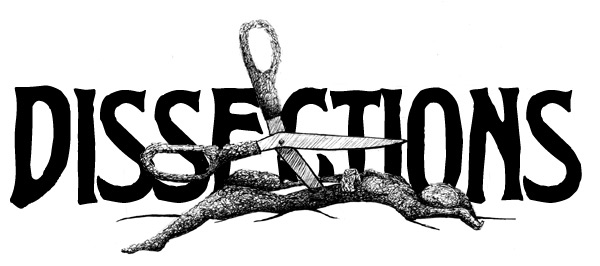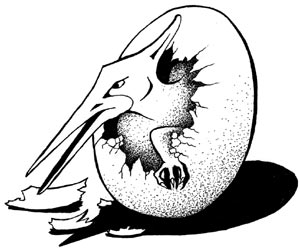[an error occurred while processing this directive]



Infernal Dreams:
Tangerine Dream’s L’Inferno
Lawrence C. Connolly
I’ve been a fan of Tangerine Dream ever since they did the score for William Friedkin’s Sorcerer (1977), the film that introduced the band to people who knew nothing of the German experimental music scene of the 1960s and 70s. Other film work followed: Thief (1981), The Keep (1983), Firestarter (1984), and Legend (1986). Each score is remarkable, with the best (Sorcerer and Thief) lending a sense of dark, pulsing urgency to the action.
In 2006, Snapper Music released a DVD version of a newly scored restoration of Giuseppe de Liguoro’s L’Inferno (1911) – an early film that dramatizes Dante’s journey through the nine circles, three rounds, and ten bolge of a medieval hell. Reputed to be the first Italian feature film, L’Inferno became an early cinematic blockbuster in the US, but it soon suffered the fate of many early films, circulating in increasingly shortened versions before finally descending into archival limbo, where it remained until Eye 4 Films assembled a full-length restoration augmented with a score by Tangerine Dream. A tantalizing package, indeed!
The DVD opens with a track titled “Before the Closing of the Day,” an overture featuring electronic keyboard and a swirl of wordless chants. The sound is classic Tangerine Dream, reminiscent of the slow preludes that distinguish some of what I consider the band’s most memorable CD tracks: “Little Blond in the Park of Attractions” from Tyranny of Beauty or “Too Hot for My Chincille” from Lilly on the Beach. Such openings often precede a torrent of pulsing bass and percussion, and L’Inferno’s score seems, at first, to work in similar fashion, with an encroaching timpani beat rising just as the restoration’s main title card appears. So far so good.
In the two minutes that come between the title card and the actual start of the film, the viewer is treated to a series of images designed to build anticipation for what is to follow. The first is a shot of the black-clad Dante following a white-robed Virgil. The image quality is what you would expect from a 100-year-old film: grainy, scratched, and framed without the aesthetic sense that would develop in the century after the film’s creation. Nevertheless, the viewer may be intrigued by how much the image of Dante (played here by Salvatore Papa) resembles the author’s portrayal in the well-known etchings of Gustave Doré.
More Doré-inspired images follow: the spirit of Beatrice Portinari standing in a heavenly garden, a mass of tormented souls bathing in a river of filth, the ferryman Charon steering toward shore, hoarders and wasters rolling sacks of money along a rocky ledge, the lovers Paolo and Francesca suspended in tempestual winds. Though scratched and faded, the images are enticingly surreal, and the music builds nicely as they appear and fade. But then the film begins.
The first shot is a degraded intertitle, white letters superimposed over a Doré landscape. The text reads:
“The ‘Divine Comedy’ of Dante was inspired by a little girl, only nine years of age, when her beauty first impressed the poet. Beatrice died at the age of twenty-four, and Dante’s plan to immortalize her resulted in one of the most stupendous achievements of human genius – the Inferno."
The text, apparently an attempt to infuse love-interest into a film about two men walking through hell, is not exactly accurate. Beatrice Portinari is indeed a character in the Divine Comedy, but she has barely a cameo in L’Inferno. In truth, the first book of Dante’s Comedy seems to have been inspired more by cruel politics than unrequited love. Nevertheless, I probably would have forgotten the overstatement if the music had swept me away when the action began. Alas, it didn’t. Instead, the score suddenly gave way to a lilting vocal performance.
As much as I admire Tangerine Dream’s instrumentals, I have never been a fan of their lyrics, and so I felt a sense of disappointment when “Before the Closing of the Day” gave way to “Spirit of Virgil” – a song that falls considerably short of the power of Dante’s poetry. Consider, for example, the opening lines of Dante’s Comedy. Here they are in the original Italian:
Nel mezzo del cammin di nostra vita
mi ritrovai per una selva oscura
ché la diritta via era smarrita.
Ahi quanto a dir qual era è cosa dura
esta selva selvaggia e aspra e forte
che nel pensier rinova la paura!
And here are the same lines translated by John Ciardi:
Midway in our life’s journey, I went astray
From the straight road and woke to find myself
Alone in a dark wood. How shall I say
What wood that was! I never saw so drear,
So rank, so arduous a wilderness!
Its very memory gives shape to fear.
Note the tension, vivid detail, and active constructions. Now here, as best as I can decipher them, are the corresponding lyrics from “Spirit of Virgil”:
One Good Friday […]
I got lost in a dark wood.
I was wondering how I’d managed
To stray from the straight path.
The night was full of peril.
The ellipsis in the first line is for a phrase that I simply cannot make out. The singer, long-time Tangerine Dream collaborator Jayney Klimek, has a beautiful voice, but it’s sometimes difficult to understand. No matter. The discernible words are enough to demonstrate how much the lyrics represent a step down from the original poetry. The details are the same, but the tension is gone. And such is the fate of the rest of the score.
As for the film itself, Giuseppe de Liguoro’s adaptation is generally true to the poem’s structure. It features a series of scenes, each depicting Dante and Virgil descending through the regions of hell. Most scenes open as static shots, framed in the standard 4:3 ratio of early films. We see a region of hell. Dante and Virgil enter from one side, look around, gesticulate, and exit.
Some of the sets are undressed landscapes, with the hills and forests of Italy serving as the Dark Wood of Error, the slope of Mount Joy, and the banks of the rivers Acheron and Styx. Others feature rocky backdrops and foreground fires. These are the most interesting.
One of the strangest sequences depicts Dante’s encounter with heretic Cavalcante de' Cavalcanti. The episode begins with a long shot of a burning field. No trick photography here. The flames are real, lighting the foreground as they spread across the stage.
Dante and Virgil enter, walking among the flames until the glowing figure of Cavalcante rises from an open tomb in the center of the stage. The shot is alarming in a number of ways, partly for its dramatic design, but also for the real danger that the actors and crew obviously faced while filming it. Consider: Dante and Virgil are dressed in ankle-length robes, hems swaying inches from the flames. Then the scene cuts to one of the film’s few close shots. Dante, Virgil, and Cavalcante filling the foreground as flames and smoke rage behind them. Watch closely, and you’ll see streams of lighter fluid splashing over the stage right behind the actors. Such are the pyrotechnic effects of early cinema – stagehands with buckets of combustible chemicals standing out of frame, feeding real fires while robed actors converse with a nearly naked man in a glowing pit. It’s a harrowing tableau.
The film also features some moderately successful attempts at optical fades, split screens, and forced perspectives. None of the effects are quite as good as those employed by Georges Méliès during the same period, but they are fascinating nonetheless.
Thus, if you’re looking for a peek at the vistas of hell, you may be better served by reading Dante than by watching Eye 4 Films’ restoration of L’Inferno. And if you’d like to score that reading experience, you might consider loading your audio device with Tangerine Dream’s Sorcerer tracks.
Sometimes the best classics are the ones that play in the cinema
of the mind.